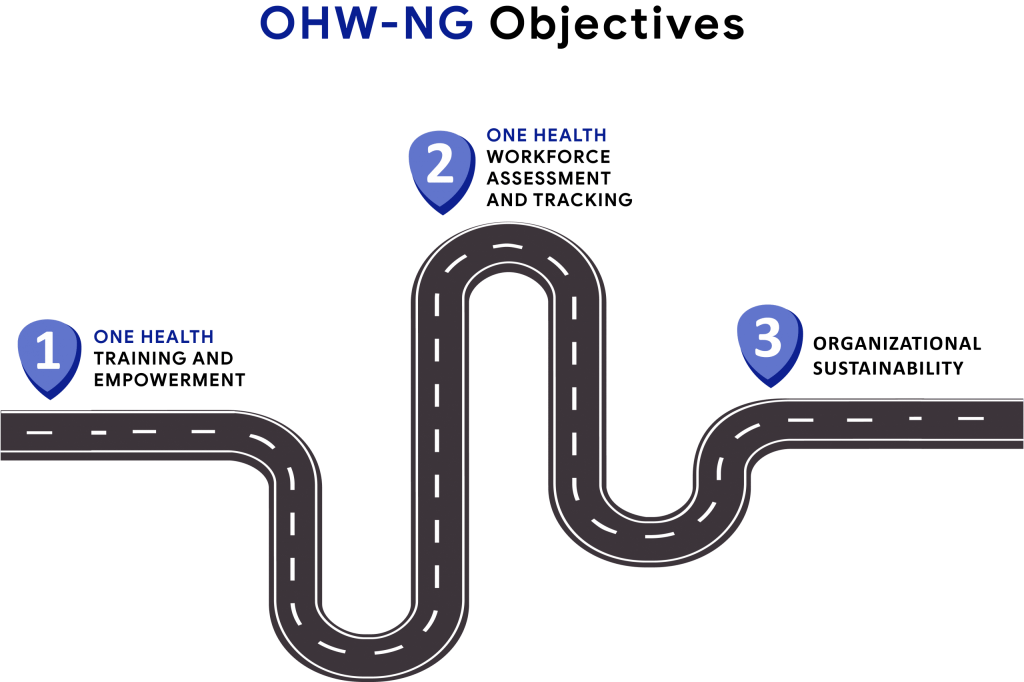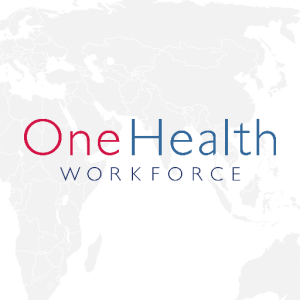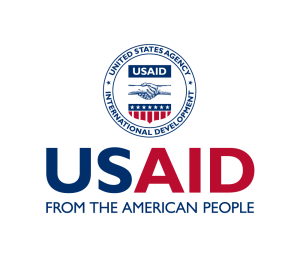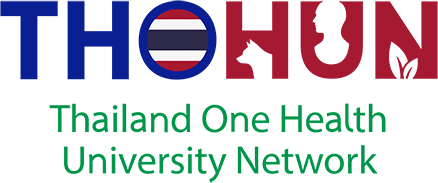One Health
Next Gen

Although globalization improves human lives and the economy, there are still hidden threats that could destroy our lives causing by a pandemic outbreak of infection disease or antimicrobial resistance. Population growth, human migration and fluctuating economy, these causes a loss of balance between human, animal and the environmental health. In the current agenda that we must rely on ourselves as much as possible, USAID One Health Workforce-Next Generation (OHW-NG) under the USAID’s Emerging Pandemic Threat Initiative has been established to stand against these threats by worldwide building a fundamental capability in order to predict, prepare and respond to pandemics. This would be a crucial opportunity to bring these achievements to a new level of sustainability with exceptional capabilities and vision to increase and expand OH workforce activities. Meanwhile, systematically institutinalizing would produce sustainable models of workforce development and robust university networks co-developing the adaptive management mechanisms with AFROHUN and SAEOHUN to facilitate routine reviews of OH curricula and workforce development in their region and also regularly promote the training materials and pedagogy, such as in-service traning, peer learning, field-based learning, policy and advocacy capacity-building and faculty development.

OHW-NG aim to build a transdisciplinary workforce that can integrate efforts across sectors and that has the knowledge, perspective, respect, and skills required to not only rapidly respond to emergent events, but also to effectively collaborate in order to sustainably manage health system under three frames of objectives as follows:
- To Develop, deliver, and institutionalize training and educational offerings in alignment with prioritized One Health core competencies and technical skills.
- To establish system, policies, and procedures to assess and track multi-sectoral workforce placement, performance, and impact.
- To strengthen the functional and organizational capacities of the regional One Health university network to ensure they are capable of acquiring and managing direct donor funding

The One Health Workforce (OHW) project is part of the United States Agency for International Development (USAID) Emerging Pandemic Threats (EPT) 2 program, which focuses on disease surveillance, training, and outbreak response. The U.S. government Global Health Security Agenda (GHSA) which targets “a world safe and secure from global health threats posed by infectious diseases.” The five main objectives of OHW are:
-
- Define OHW needs: Support African and Southeast Asian One Health University Networks to participate with government, academia, and other key partners in defining One Health workforce needs.
- Pre-service training: Support networks to assist government ministries to train the future OH workforce.
- In-Service training: Support the networks to assist government ministries to train the current OH workforce.
- Faculty development: Support developed country universities under OHW in strengthening faculty Capacities for OH teaching, research, and community outreach for the African and South East Asian University Networks.
- Organizational development: Positioning the One Health Networks as long- term sustainable leaders in One Health.

Emerging Pandemic Threats
The United States Agency for International Development (USAID) has launched the Emerging Pandemic Threats Program in disease surveillance, training, and outbreak response addressing zoonosis to prevent future trans-boundary pandemia, which employs collaborative approaches of One Health.
Under that EPT Program, the RESPOND project and Development Alternatives, Inc.(DAI) collaborate these awareness efforts in the South East Asia region at the academic level, so the South East Asia One Health University Network (SEAOHUN) was formed with 4 participating countries from INDOHUN core universities: Universitas Indonesia, Bogor Agricultural University, and Gadjah Mada University. MyOHUN core universities: Universiti Kebangsaan Malaysia and Universiti Putra Malaysia. THOHUN core universities: Chiang Mai University and Mahidol University. VOHUN core universities: Hanoi School of Public Health, Hanoi Medical University, and Hanoi University of Agriculture.
